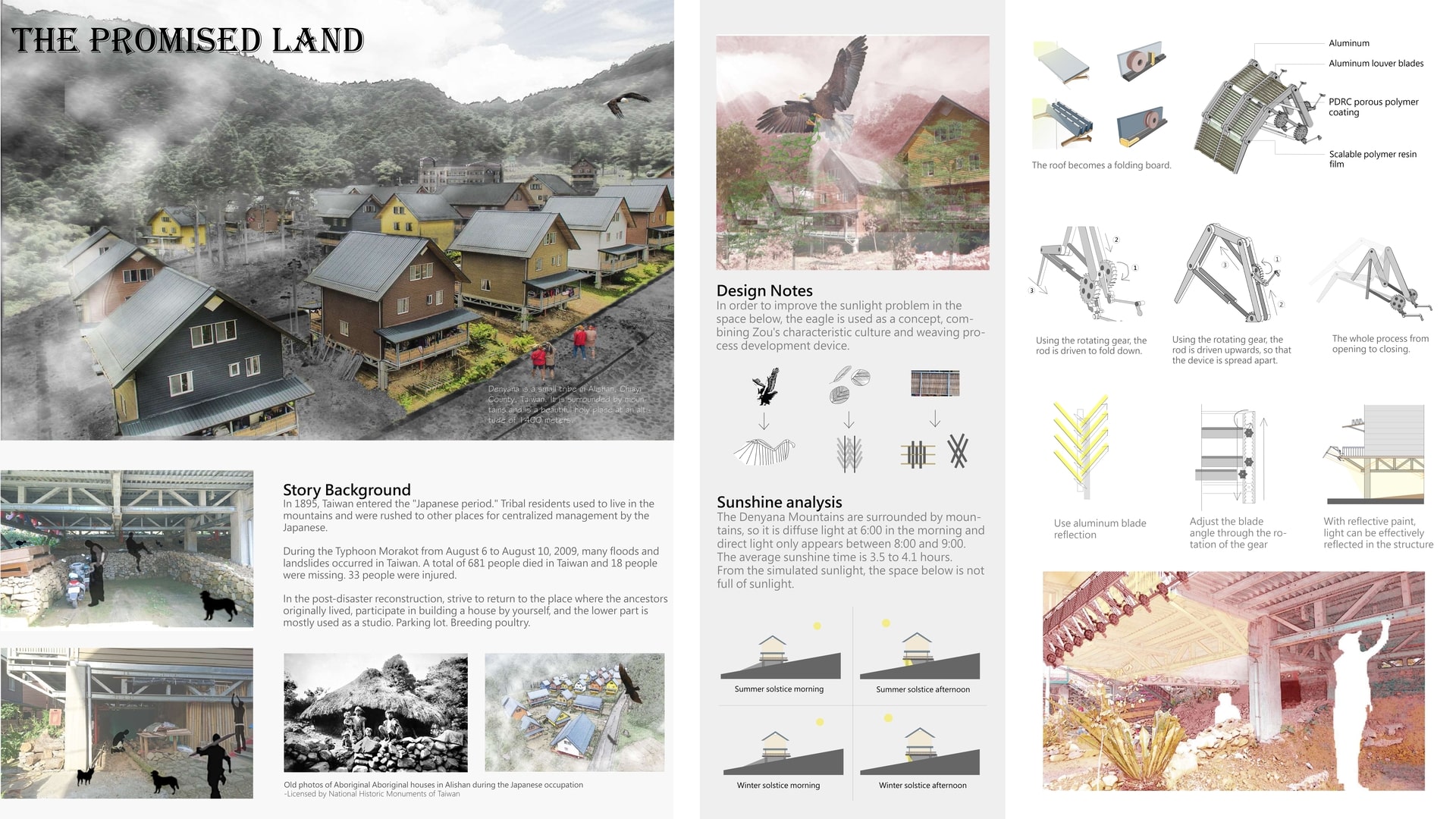Project Description
Denyana is a small tribe located in Alishan Township, Chiayi County, Taiwan. It is surrounded by mountains and a beautiful sacred place at an altitude of about 1400 meters. The background of the story began in 1895, when Taiwan entered the "Japanese period". The Zou were rushed to other places for centralized management by the Japanese. They adopted a "modern" coercive method to completely change the lifestyle of the indigenous people. By 1906, the Governor of Taiwan The government plans to develop the Alishan Forest and ask them to build small trains and transport cypress trees until the Typhoon Morakot that occurred in south central and southeastern Taiwan from August 6 to August 10, 2009, during which many floods and landslides occurred in Taiwan with earth flow. In many places, the rainfall on the 2nd is equivalent to the amount of a whole year. Alishan Station No. 10 rainfall more than 3000 mm. A total of 681 people were killed, 18 people were missing and 33 people were injured in Taiwan. Most of the casualties were concentrated in Chiayi, Tainan, Kaohsiung, Pingtung, Nantou and other regions. To continue the lifeblood of the clan. After the 1988 typhoon, the Laiji tribe has been fighting with the government and scholars for 152 forest land (the original ancestor's residence) for many years. The tribe decides where to rebuild their house. Because it matches the terrain and does not want to destroy nature, the height of the house is similar to the traditional house of the tribe, giving the house a different spatial form. Most of the residents are used as studios, parking lots or poultry. De Enyana is surrounded by mountains and terrain, so it is diffuse light at 6:00 am, and direct light only appears between 8:00 and 9:00, which indirectly forms a radiant fog, which usually occurs at a very long time. Early morning. According to the sun angle and terrain simulation, it can be seen that the sunlight in the space below the house is not sufficient. In order to improve the problem of lack of sunlight in the space under the tall house, the original roof form was first changed to a foldable and retractable metal plate. The purpose is to allow users to master their needs for sunshine, which can be adjusted at any time. The use of the mechanism allows the pulley to move freely and also be blocked to ensure that the pulley will not fall off. Our device is a bionic eagle. By transforming the structure of the wings, the joint structure when unfolding and retracting, the composition of the feathers and the form of bamboo weaves, combined with the newly developed PDRC porous polymer coating can effectively reflect up to 96-99% of sunlight (including ultraviolet light, visible light and near infrared light), and the stretchable polymer resin film can more effectively reflect sunlight into the space below. Through our design research and simulation, the light can reach 1/2 or even 2/3 during the summer solstice, and can transmit 1/3 of the light during the winter solstice. This result can not only solve the problem of insufficient sunlight below in addition to providing sufficient light for residents and domestic animals, the installation can also become a characteristic installation that symbolizes the Tsou culture, and it can also give visitors to this place a different experience.
